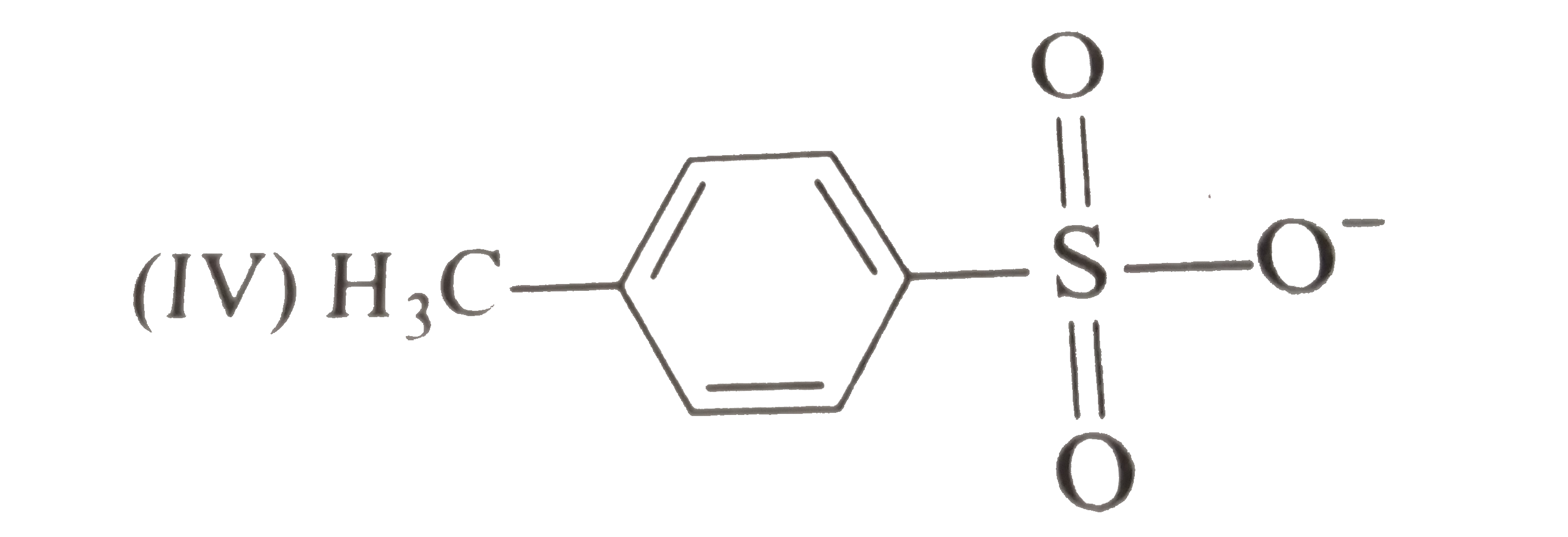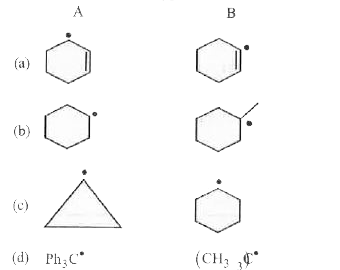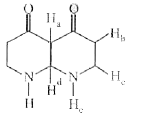Complete Solutions to Exercise - 1 : Concept Builder (Topicwise) TOPIC 3 : Concepts of Reaction Mechanism in Organic Compounds and Purification of chapter ORGANIC CHEMISTRY SOME BASIC PRINCIPLES AND TECHNIQUES of Class 12 book with complete answers and questions
| Class 12 | CHEMISTRY |
| Chapter | ORGANIC CHEMISTRY SOME BASIC PRINCIPLES AND TECHNIQUES |
| DISHA PUBLICATION | Exercise - 1 : Concept Builder (Topicwise) TOPIC 3 : Concepts of Reaction Mechanism in Organic Compounds and Purification |
| Number Of Questions | 31 |
| Academic Year | 2023-24 |
In the mechanism of Hoffmann reaction which intermediate rearranges to alkyl isocyanate ?
View SolutionWhich one of the following orders is correct regarding the inductive effect of the substituents
View SolutionHyperconjugation is most useful for stabilizing which of the following carbocations?
View SolutionChlorine in vinyl chloride is less reactive because
View SolutionIn the following group :
`-OAc(I),-OMe(II),-OSO_(2)(III),-OSO_(2)CF_(3)(IV)`
The order of leaving group ability is :
View SolutionMost stable carbocation is :
View SolutionThe decreasing order of nucleophilicity among the nucleophiles is :
(I) `CH_(3)-underset(O)underset(||)C-O^(-)`
(II)`CH_(3)O^(-)`
(III) `CN^(-)` (IV)
View SolutionDecreasing order of reactivitytowards nucleophilic addition to carbon yl group among cyclopentanone , 3- pentanone and n- pentanal is
View SolutionSelect the appropriate relation with repect to acidity of X, Y, Z for the given compound ,with increasing order .

View Solution
the reaction is not possible because
View SolutionWhich among the following group when attached to benzene ring will direct the incoming electrophile predominantly to the meta position ?
I. `-CH_(3)`
II. `-CH_(2)Cl`
III. `-NH_(3)^(+)`
IV . `-C Cl_(3)`
`-NHCOCH_(3)`
View SolutionIn which of the following pairs A is more stable than B ?

View SolutionWhich of the following has the highest nucleophilicity ?
View SolutionThe increasing order of the boiling points for the following compound is :
`underset((I))(C_(2)H_(5))OH " " underset((II))(C_(2)H_(5))Cl " " underset((III))(C_(2)H_(5))CH_(3) " " underset((IV))(C_(2)H_(5))OCH_(3)`
View SolutionWhich of the following compouns has most acidic hydrogen ?
View SolutionPolarization of electrons in acrolein may be written as:
View Solution
Identify most acidic hydrogen present in the above compound :
View SolutionOf the following compounds, which will have a zero dipole moment ?
View Solution
Which statement is incorrect in respect of the above reaction ?
View SolutionCarbon-carbon double bond lenghth will be maximum in which of the following compounds ?
View SolutionThe structure of `CH_(2)=C=CH_(2)` is :
View SolutionWhich of the following will show aromatic behaviour ?
View SolutionWhich of the following reactions cannot proceed by `S_(N)1` mechaism ?
View SolutionKetene `CH_2=C=O` has
View SolutionWhich one of the following does not have `sp^(2)` hybridised carbon ?
View SolutionHow many `pi` - bonds are present in naphthalene ?
View SolutionThe shape of methyl carbanion is similar to that of -
View SolutionWhich of the following represents the correct order of stability of carbocations ?
View SolutionWhich one of the following is most reactive towards electrophilic reagent ?
View SolutionThe pair of electron in the given carbanion, `CH_(3)C -= C^(Θ)`, is present in which of the following orbitals
View SolutionThe major product of dehydraction of the following

View Solution
Exercise - 1 : Concept Builder (Topicwise) TOPIC 3 : Concepts of Reaction Mechanism in Organic Compounds and Purification questions and complete solutions for chapter ORGANIC CHEMISTRY SOME BASIC PRINCIPLES AND TECHNIQUES of DISHA PUBLICATION CHEMISTRY (HINGLISH) of Class 12
All Exercises from DISHA PUBLICATION Class 12 CHEMISTRY ORGANIC CHEMISTRY SOME BASIC PRINCIPLES AND TECHNIQUES
- Exercise - 1 : Concept Builder Builder (Topicwise) TOPIC 1 : Classification and Nomenclature of Organic Compounds)
- Exercise - 1 : Concept Builder (Topicwise) TOPIC 2 : isomerism in Organic Compounds )
- Exercise - 1 : Concept Builder (Topicwise) TOPIC 3 : Concepts of Reaction Mechanism in Organic Compounds and Purification
- Exercise - 2 : Concept Applicator
- JEE Main 5 Years at a Glance